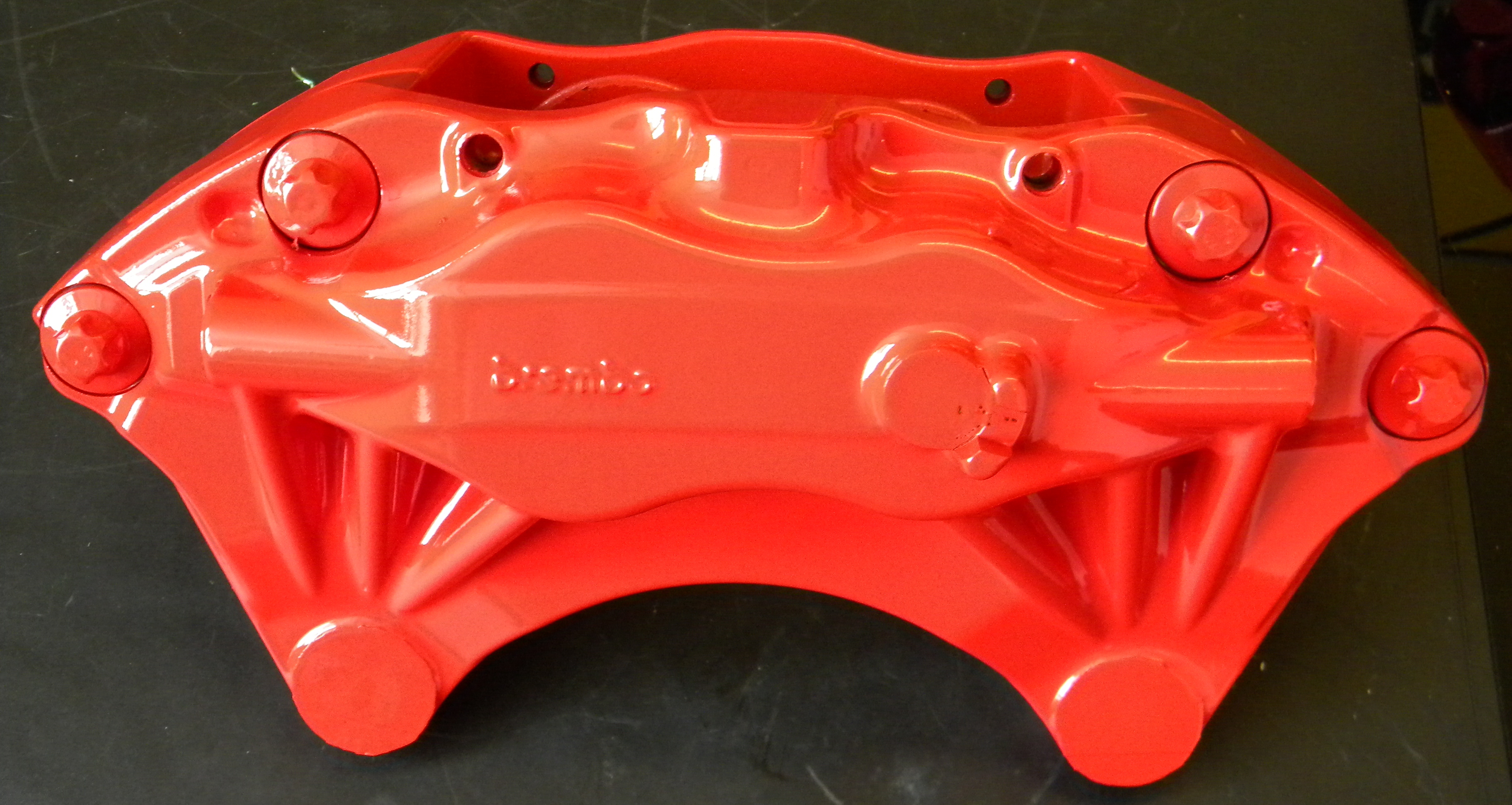Brake Caliper Painting
Brake calipers are mounted on the hubs of vehicles and hold the brake pads in place. They contain the pistons which push the pads onto the discs, creating friction, and thus slowing the vehicle. They can be broadly divided into two categories – floating and fixed. Floating calipers are more common and though they can be painted, they are visually less profound than fixed calipers – which are usually larger and fitted to high performance vehicles.
As cars get heavier and more powerful, brakes get larger – on many performance cars the brake calipers a real visual masterpiece that can be seen through the spokes of alloy wheels – so they need to look good!
Regardless of type, painting brake calipers requires some mechanical work so should be approached with caution. In every case the wheels will need to be removed, and for those looking for the perfect finish, the calipers themselves will need to be removed. The latter scenario will require the brake system to be bled and comprehensively tested prior to the car being allowed back on the road.
There are two approaches to caliper painting – leaving them on the car is quicker, cheaper, and easier for either the detailer or the enthusiast – removing them takes time, specialist equipment, and considerable patience. The first method involves thoroughly cleaning and degreasing, followed by taping up all the areas around the caliper, including the disc and sliding mechanisms. Paint is then applied by brush and left to cure before a layer of lacquer is applied in a similar manner. We often see people painting things like the pads which is dangerous – it is absolutely crucial not to compromise the function of the calipers in the name of beautification.
The proper way of painting calipers involves their removal, an acid bath to remove old paint, and then powder coating with multiple, carefully applied layers. Any decals should also be replaced, not re-applied. All the materials used should be designed to cope with the extreme heat that brakes produce. Sometimes it is also worthwhile to replace the rubber seals at the same time – they are normally relatively cheap to buy and straight-forward to fit and add that extra piece of mind.
We cover brake calipers in more detail in Issue 1 of the Pro Detailer magazine and will be doing more in-depth guides in future issues too.
All the images above are brake calipers that have been restored by Andy Parsons of Unique Detail - in some cases the hubs have also been improved. Generally these are 'floating' calipers but note the Honda NSX fixed ones - all the cars are high performance.



